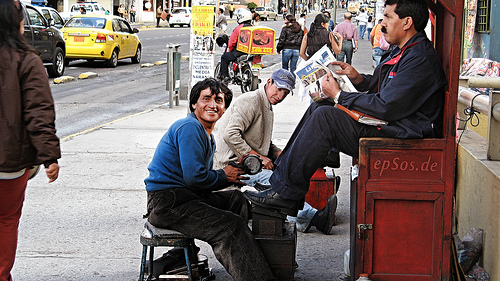 Once in a while I like to take on the problems of the world. I do this, not (usually!) as an opportunity to rant, rather as an opportunity for conversation, floating ideas, and tagging potential resolutions, which I can then hold out as a place to walk towards. It helps motivate me, when the odds seemed stacked against.
Once in a while I like to take on the problems of the world. I do this, not (usually!) as an opportunity to rant, rather as an opportunity for conversation, floating ideas, and tagging potential resolutions, which I can then hold out as a place to walk towards. It helps motivate me, when the odds seemed stacked against.
One of those big world problems is the growing gap between rich and poor. It’s considerably widened since the 1970’s. The “gap” has irked me for a long time. Most of our political leaders love to sidestep the gap. Maybe its a Cold War mindset still lurking, capitalism vs. communism. Or maybe its something more sinister, witness this NY Times opinion piece following the November 2010 US mid-term elections, Who will stand up to the super rich? For an excellent read on the gap, and why it matters, I recommend The Spirit Level: Why greater equality makes societies stronger.
At a one-to-one level, moving closer to each other will help reduce relationship highs and lows. The same principle applies to the big picture. Want to strengthen your team, your community, your region, your world? Reduce the gaps, and you’ll strengthen the connections, and create new opportunities for collaboration, innovation, and communities where everyone feels like they belong.
Here’s a few strategies I like, some soft, some hard, some doable now, some in the future (maybe), for addressing the gap between rich and poor:
- Bring the rich and poor together, face-to-face; volunteering, community meals, hosting CEO tours of the street, offer opportunities to appreciate the other, and acknowledge our similarities, and bridge the gulf between social status and friendship
- Advocate for a living wage; Want the good life? Your neighbours need it to
- Partner with social entrepreneurs; as being advocated by some Western governments as a way to solve some of society’s most intractable problems
- Enable social entrepreneurs; create places where social entrepreneurs can work together for public good
- Combine employee share-ownership & participative management; employee-ownership entails a move from business as a piece of property to business as a working community
- Advocate for wealth redistribution; through a) using taxes and benefits to redistribute very unequal incomes and/or b) greater equality in gross incomes before taxes and benefits, which leaves less need for distribution
- Give to the poor, big time; another wealth redistribution idea, as proposed in this week’s Globe&Mail, “To end poverty, guarantee everyone in Canada $20,000 a year. But are you willing to trust the poor?”
What other ways can you think of to reduce the gap between rich and poor, and make your community, no matter the size, a stronger place?
If you enjoyed this post, please consider leaving a comment or subscribing to my blog. Thanks, Ben.
Photo credit: Epsos.de on Flickr

This is an important topic Ben – it’s amazing how much of our economic news is dominated by the financial health of corporations, as if that is the only meaningful measure. Few realize, I suspect, that the rich / poor gap is widening and starting to resemble the 1920s and 1930s. There are systemic issues at play, no doubt, but your suggestions for encouraging meaningful conversations are helpful.
Lorne, thanks for emphasizing the bigger picture aspects of the gap… while I think many people know a widening rich/poor gap is not good for society, I find it affirming that there is much data being generated now giving gap metrics, and stories weaving that data together, and these stories help us understand the close linkage between societal health / personal satisfaction and the gap.
thank you so much for this information..
it helped me a lot..
well done Ben thanks for a wonderful message describing the ich and the poor. It is very appealling to come with these points. Infact is my pressure to read thaks a lot